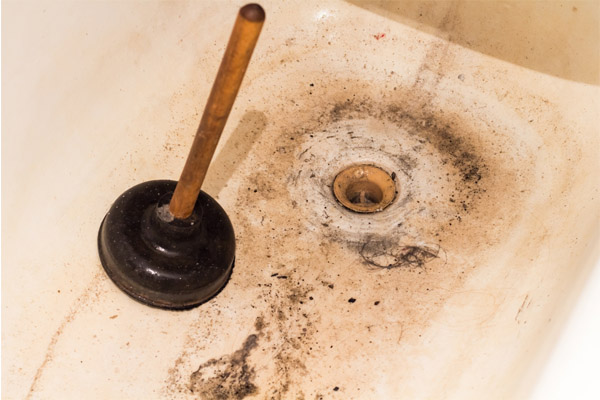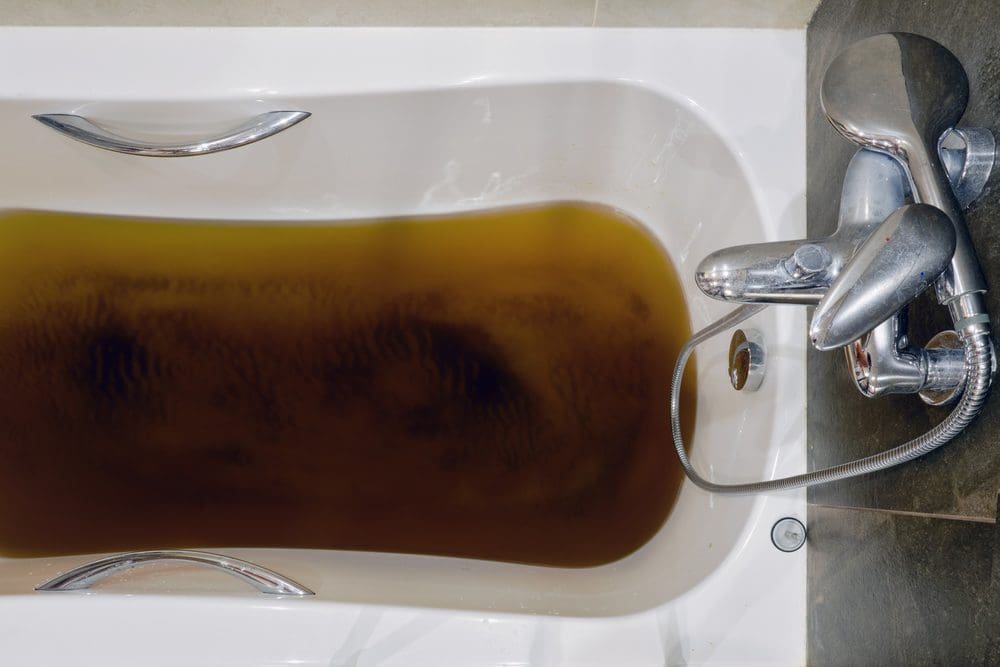We have come across the article pertaining to Why is Sewage Backing Up Into My Bathtub? directly below on the web and think it made sense to share it with you here.

Sewer back-up in the bath tub can be a distressing and unhygienic problem for any home owner. Not only is it troublesome, yet it additionally postures severe health threats and suggests underlying concerns with the plumbing system. Recognizing why sewage is showing up through the bath tub is important for taking suitable action to resolve the trouble successfully.
Introduction to the Concern
Comprehending the Problem
When sewer draws back up into the bathtub, it's a clear sign of an issue with the water drainage system. The wastewater that ought to be moving away from your home is instead locating its back right into your home, which can bring about substantial damages and health hazards.
Prospective Causes
A number of factors can add to sewer back-up in the bath tub. From clogs in the sewage system line to concerns with the plumbing facilities, recognizing the root cause is important for discovering a remedy.
Typical Factors for Sewage Backup
Obstructions in the Drain Line
One of the most usual reasons for sewer back-up is a clog in the sewage system line. This can happen because of the buildup of particles, oil, or international items in the pipes, protecting against correct circulation and creating sewage to support right into your tub.
Tree Origin Intrusion
Tree roots looking for wetness and nutrients can penetrate sewage system lines through little fractures or joints. Over time, these origins can grow and expand, triggering considerable damage to the pipes and causing sewer backup issues.
Aging Infrastructure
Older homes may have obsoleted plumbing systems that are more susceptible to corrosion, splits, and degeneration. As pipelines age, they come to be extra susceptible to leakages and obstructions, boosting the possibility of sewage backup incidents.
Heavy Rainfall or Flooding
Throughout periods of heavy rainfall or flooding, the sewer system might become overwhelmed with excess water, triggering backups and overflows. This can result in sewer supporting right into tubs and other components inside the home.
Health And Wellness Risks Associated with Sewage Back-up
Contamination of Water System
Sewage backup can contaminate the water system in your home, posing a significant health and wellness threat to you and your household. Exposure to infected water can result in gastrointestinal issues, skin infections, and various other health problems.
Spread of Disease
Sewage has damaging germs, viruses, and parasites that can cause a series of conditions, including hepatitis, cholera, and gastroenteritis. Entering into contact with sewage or contaminated surfaces puts you at risk of infection.
Mold Development
Moisture from sewage backup can create ideal problems for mold and mildew growth in your house. Mold spores can worsen breathing issues and create allergies in sensitive individuals, making punctual cleanup necessary.
Indicators of Sewage Backup
Foul Odors
Undesirable smells emanating from drains or fixtures, particularly in the bathroom, may show sewer back-up concerns. These smells are commonly strong and consistent, indicating a trouble that calls for immediate interest.
Slow Draining Fixtures
Tubs, sinks, and toilets that drain slowly or not whatsoever could be experiencing sewage backup. If several fixtures are impacted simultaneously, it's most likely that the concern stems from a typical point, such as the primary sewer line.
Gurgling Noises
Odd gurgling or gurgling noises originating from drains when water is running somewhere else in your home are a sign of air trapped in the plumbing system. This air accumulation can arise from sewer backup and should be examined without delay.
Immediate Actions to Take
Turning Off Water
In case of sewer backup, it's vital to shut off the water to avoid more contamination and damages. Situate the main water shutoff valve in your home and closed it off till the concern can be fixed.
Calling a Specialist Plumber
Handling sewer back-up is not a do it yourself task. Contact a certified plumber with experience in managing sewage-related problems to examine the scenario and perform needed fixings or clean-ups.
Staying Clear Of Contact with Contaminated Water
Till the sewage back-up is settled, stay clear of contact with infected water to stop the spread of bacteria and pathogens. Wear safety gear if you must be in the damaged area and wash your hands completely later.
Preventive Measures
Normal Maintenance of Sewer Lines
Schedule normal assessments and upkeep of your sewage system lines to determine and attend to possible problems before they intensify into significant issues. This can include cleaning out particles, evaluating for tree origin breach, and repairing any damaged pipelines.
Installing Backwater Valves
Consider installing bayou valves in your plumbing system to avoid sewage from flowing back right into your home during periods of heavy rainfall or flooding. These shutoffs automatically close when water draws back up, safeguarding your property from contamination.
Correct Disposal of Family Waste
Stay clear of flushing anything other than bathroom tissue and human waste down the bathroom to stop obstructions and obstructions in the sewer line. Dispose of oil, oil, and other home chemicals appropriately to lessen the danger of plumbing troubles.
Cleaning Up After Sewage Back-up
Disinfection Procedures
Extensively decontaminate and disinfect impacted areas after sewage backup to eliminate hazardous microorganisms and protect against mold and mildew growth. Usage suitable cleansing items and safety equipment to guarantee safe and reliable cleaning.
Remediation of Affected Areas
Fix any damage to flooring, walls, or fixtures triggered by sewer back-up. Depending on the extent of the damages, you may need to replace carpets, drywall, or various other products to restore your home to its pre-loss condition.
Why is Sewage Coming Up Through Your Bathtub?
Reasons You May Have Sewage in Your Bathtub
All the drains in your home lead down different pipes to get to the main sewer line. If you’re seeing sewage in the bathtub, the problem is that the main sewer line is clogged up, which is causing the water running through other drains to be pushed back into other pipes. The problem isn’t the bathtub, but the main line. The sewer line can get backed up by anything that goes down the drain, from food waste, hair and soap particles to jewelry or children’s toys. Tree branches or dirt can also impact the sewer line. If you’re seeing sewage in the bathtub, you have a big problem that usually needs a professional plumber. Trying to fix this problem without the right tools or knowledge can lead to bigger plumbing problems.
Fixing a Clogged Sewage Line
Although you shouldn’t try to fix the clogged sewer line on your own, you may be able to mitigate the issue until you can get a plumber to your home. A plunger isn’t going to help, because it won’t be able to reach the sewage drain to unblock the problem.
Turn Off Water
Find the main shutoff valve to your home to turn off the water. This prevents more water from going down the drain which is only going to flow back into your bathtub.
Snake the Toilet and Drain
Start by using a drain pipe snake to clean out the toilet drain. Rotate the snake clockwise when you push the snake down. As you pull it out, the snake should spin counterclockwise. Follow up by snaking out the bathtub drain. If you are successful, both the toilet and shower will drain efficiently. If you’re not successful, you probably have a bigger problem than your tools and experience can manage.
Contact a Professional Plumber
Pros have the tools to find the source of the problem and the experience to manage big blockages without causing more damage to your pipes. It can save you a lot of stress by contacting the professionals sooner rather than later.
Identify the Early Signs of a Clogged Sewage Line
If you’re gearing up for a holiday family gathering or just want to avoid the hassle of a clogged sewage line in your home, make sure you recognize the signs of a clogged sewer line.
Slow drains are a sign of a sewer line problem. Gurgling drains from any drain in your home indicate that you may have an obstruction in the drains. If your toilet keeps getting clogged, it might be a problem with the sewer line. When you see laundry water or water from the dishwasher in different sinks in the home, it’s an indication that your sewer drain is beginning to get backed up. These symptoms can often be “fixed” temporarily to get through a day or week before you start seeing the same problem. When it comes to plumbing problems, you want to fix the root of the problem instead of muddling through. The clog will not go away on its own.
https://handymanconnection.com/mississauga/articles/why-is-sewage-coming-up-through-your-bathtub/

As an avid reader about Why is There Sewage Coming Up Through the Bathtub, I thought sharing that excerpt was a good idea. Sharing is good. Helping people is fun. Bless you for being here. Kindly come visit our website back soon.
Services